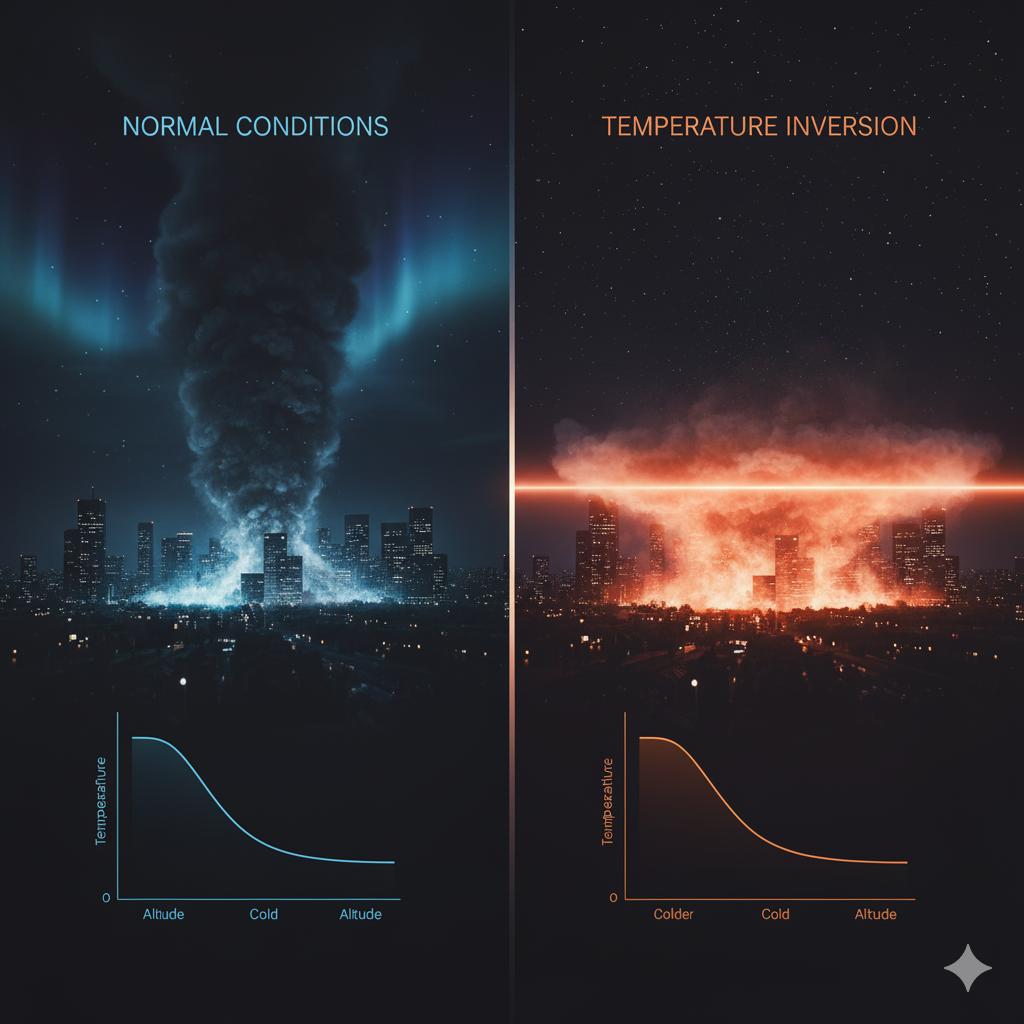Introduction
Local winds are region-specific winds that occur due to differences in temperature and pressure caused by the geographical and topographical conditions of a particular area. Unlike global wind patterns that circulate across large areas, local winds are short-lived and often confined to specific regions. North America, with its diverse terrain—from coastal plains to high mountain ranges and deserts—experiences a variety of such local winds. Understanding these winds is vital for students of geography, climatology, and environmental science, as they significantly affect weather patterns, agriculture, transportation, and human settlements.
What Are Local Winds?
Local winds are atmospheric movements that occur in localized regions due to thermal or pressure differences. They typically arise because of:
- Differential heating of land and water
- Mountain-valley interactions
- Pressure gradients over short distances
These winds can be hot or cold, moist or dry, and may have positive or negative effects on the environment and human life.
Classification of Local Winds in North America
Local winds in North America can be broadly classified into the following categories:
- Mountain and Valley Winds
- Desert Winds
- Coastal Winds
- Chinook and Related Winds
- Other Unique Regional Winds
Let’s explore each type and their prominent examples in detail.
1. Mountain and Valley Winds
Mountain and valley winds are diurnal in nature and occur due to differential heating between high-altitude and low-altitude areas.
Katabatic Winds (Downslope Winds)
- Origin: High mountain valleys during the night
- Mechanism: At night, mountain slopes cool rapidly. The cold, dense air moves downslope under gravity.
- Effects: Brings cold and dry conditions to valleys.
- Example Areas:
- Rocky Mountains
- Sierra Nevada
Anabatic Winds (Upslope Winds)
- Origin: Daytime heating of mountain slopes
- Mechanism: Warm air rises up the slope as it gets heated.
- Effects: Promotes cloud formation and can lead to afternoon thunderstorms.
- Example Areas:
- Appalachian Mountains
- Western Cordilleras
These winds are significant for aviation, agriculture, and forecasting sudden weather changes in mountainous regions.
2. Desert Winds
Desert regions in North America, particularly the Great Basin, Mojave, Sonoran, and Chihuahuan Deserts, experience specific local winds influenced by thermal convection and pressure differences.
Santa Ana Winds
- Location: Southern California, especially around Los Angeles and San Diego
- Origin: High-pressure systems over the Great Basin push air toward the Pacific Coast.
- Characteristics:
- Hot and dry
- High-speed winds (can exceed 60 mph)
- Blow from northeast to southwest
- Impacts:
- Increase wildfire risks by drying vegetation
- Reduce air quality due to dust
- Cause power outages and property damage
Desert Southwest Dust Devils
- Location: Arizona, New Mexico, parts of Texas
- Mechanism: Small whirlwinds formed by intense ground heating during dry conditions
- Size and Duration: Typically short-lived and small, but can cause localized damage
These desert winds are important in the ecology of arid lands, contributing to soil erosion and influencing seed dispersal patterns.
3. Coastal Winds
The extensive coastlines of North America, particularly on the Atlantic and Pacific sides, generate local winds that affect marine and coastal environments.
Sea Breezes
- Location: East and West Coasts of the U.S., Gulf Coast
- Mechanism: During the day, land heats up faster than water. Cooler air from the sea moves inland.
- Effects:
- Moderates daytime temperature in coastal cities
- Enhances air quality by dispersing pollutants
- Seasonal Influence: Common in spring and summer
Land Breezes
- Mechanism: At night, land cools faster than water. Air moves from the land to the sea.
- Impact: Brings cool, dry air offshore during nighttime hours
Cape Cod Winds and Nova Scotia Sea Breezes
- These regional variations of sea breezes affect local fishing, fog formation, and maritime navigation in northeastern North America.
Coastal winds are particularly critical for weather forecasting, tourism industries, and local fisheries.
4. Chinook and Related Winds
Chinook winds are warm, dry winds that descend on the leeward side of mountain ranges.
Chinook Winds
- Location: Eastern slopes of the Rocky Mountains (e.g., Alberta in Canada, Montana and Colorado in the U.S.)
- Origin: Moist winds from the Pacific lose moisture on the windward side and descend dry and warm on the leeward side.
- Temperature Impact: Can raise temperatures dramatically in hours (e.g., from -10°C to +15°C)
- Nicknames: “Snow eaters” because they rapidly melt snow
- Effects:
- Rapid snowmelt leading to localized flooding
- Agricultural benefits in winter wheat zones
- Can lead to thermal stress in livestock
Foehn-type Winds in Other Areas
- Similar to Chinook winds, but found in:
- Sierras (California)
- Cascade Range (Pacific Northwest)
These winds are important for understanding hydrology, fire management, and climate moderation in high-altitude regions.
5. Other Unique Regional Winds
Several other named winds and wind patterns are either unique to specific regions or are local adaptations of broader wind systems.
Nor’easter (Though Synoptic in Scale, Has Local Effects)
- Location: Northeastern U.S. and eastern Canada
- Season: Mostly winter
- Mechanism: Cyclonic storms draw cold Arctic air into the region while picking up moisture from the Atlantic
- Impacts:
- Heavy snowfall and ice storms
- Coastal flooding and erosion
- Disruption to transportation and infrastructure
While technically not a local wind in the strictest sense, its regional impact and predictability make it worth mentioning.
Lake Breezes (Great Lakes Region)
- Mechanism: Similar to sea breezes; temperature differences between lake surface and adjacent land
- Effects:
- Cool daytime temperatures in lakeside towns
- Can trigger thunderstorms due to convergence zones
These breezes are most active in summer and affect states like Michigan, New York, Ohio, and Pennsylvania.
Bora-like Winds in Alaska
- In parts of Alaska, especially near mountain passes, sudden cold air outbursts mimic Bora winds of Europe.
- These winds are often associated with Arctic fronts and bring rapid temperature drops and wind chills.
Significance of Local Winds in North America
1. Agriculture
- Chinook winds help in early snowmelt and protect winter crops.
- Coastal breezes moderate extreme temperatures in agricultural zones.
2. Wildfire Management
- Santa Ana and other dry desert winds are key contributors to wildfire risks in the West.
3. Weather Forecasting
- Local wind knowledge helps in issuing early warnings for storms, fog, and sudden temperature changes.
4. Environmental Impacts
- Winds play a crucial role in air and soil erosion.
- Help in pollination and seed dispersal, especially in desert ecosystems.
5. Urban Planning and Infrastructure
- Understanding local wind patterns is critical for:
- Building design (especially high-rises)
- Renewable energy placement (wind turbines)
- Transportation planning (especially for airports)
Conclusion
North America’s diverse geographical features—from towering mountain ranges and expansive deserts to vast coastlines and inland lakes—make it home to a wide variety of local winds. These winds are not just meteorological phenomena but are deeply intertwined with the continent’s climate systems, agriculture, disaster management, and human settlements. From the bone-dry gusts of the Santa Ana winds to the snow-melting Chinooks, each local wind tells a story of nature’s dynamic interplay.
Understanding these winds not only enriches geographical knowledge but also enables us to adapt better to environmental changes, ensuring sustainable interaction between humans and nature.
Quick Summary Table
| Wind Name | Region | Type | Main Features |
|---|---|---|---|
| Santa Ana | Southern California | Desert Wind | Hot, dry, accelerates wildfires |
| Chinook | Rockies (East side) | Mountain Wind | Warm, dry, rapid snowmelt |
| Sea Breeze | Coastal U.S. | Coastal Wind | Daytime cooling effect inland |
| Land Breeze | Coastal U.S. | Coastal Wind | Nighttime cooling offshore |
| Anabatic | Mountain Slopes | Upslope Wind | Warm air rising during the day |
| Katabatic | Mountain Slopes | Downslope Wind | Cold air draining at night |
| Dust Devils | Desert Southwest | Convective Wind | Small whirlwinds, local impact |
| Nor’easter | Northeast U.S., Canada | Storm Wind | Moist, cold, stormy, coastal damage |
| Lake Breeze | Great Lakes Region | Local Wind | Summer cooling, storm trigger |




